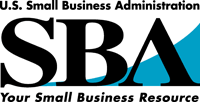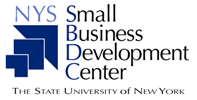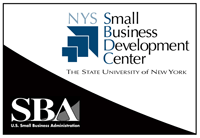|
SPD Gazette |
Week of March 26, 2007 / Issue 26 |
SBDC TRAINING & SEMINAR PROCESS
This week, we turn our attention to another significant element of SBDC operations and service delivery - providing training and seminars to the small business communities we serve. Illustrated below is the process we apply to training. It follows the same overall theme as our other process maps and flowcharts with color grouping similar functions and timelines and symbols defining types of activities.
|
As with many of our other processes, we begin with a data collection process to assure that we are responsive and well focused on the needs of small business as we develop and deliver the technical information necessary for small business growth and survival. Working with our partners, listening posts, sponsors and specific client data we learn about the issues and challenges facing small business. In some cases we may look at broad issues, e-commerce or procurement for example; while in others we look at more narrow or technical issues like dry cleaning chemical usage and tracking or road construction certifications.
The decision and selection process flows directly from data collection as we review the issues presented and assess the priority of each to determine importance regionally and statewide leading to creation of a Training Needs Statement. This may take several forms from a reasonably extensive ‘white paper’ to a simple list of topics.
|
|
The Needs Statement is then aligned with our statewide Topic Plan to assure alignment with strategic objectives and implementation plans. We now move to the actual selection process at which time we start to make decisions about the achievability of each choice. Do we have the requisite resources? Can we build the proposal that will secure the resources? Will the logistics work? Can we contract to provide the training?
Once complete, the selection decisions are finalized and we move into event planning which includes instructional technique, specific content, take away materials, and basics such as registration and evaluations. Will we be integrating other SBDC research? Is it external curriculum? What is the identifiable educational content? Concurrent with this effort are the specific delivery considerations of marketing – How will we get the word out? How will we secure sponsors and value their participation? and How will we address the range of compliance issues from sponsor agreements to completion certificates?
With planning complete, we deliver the event. Materials are provided to the participants, instruction is delivered and observations are made to ensure a complete and thorough delivery of the content.
Immediately following delivery we move in two directions of comparable importance. The first, follow-up, is split into essentially internal and external functions. Internally we may meet with training attendees to explore more specific client services, utilize questions from the attendees to drive additional research, make referrals within our host institution for anything from classes to job placement services, and, use the event as an outreach event to bolster community awareness and appreciation of the role of the SBDC. External actions include referrals to sponsors and partners for additional client services, referrals for additional training or to more specific instructional activities for topic advancement.
Concurrently, we process the event evaluations and registration data to learn as much as possible about the attendee’s response to the content, delivery, relevance and significance of the training to the participants. As the chart indicates we utilize our learning from this quality assurance/quality control aspect to adjust programs, topics, delivery mechanisms and marketing; learning from our results to refine selection, process, delivery and content. This is a key step to assuring that our training is delivering the value and tools needed by small business to maximize opportunity and overcome challenges.
View SBDC Training & Seminar Flow Chart here. |
|
|
Correct:

Funded in part through a
Cooperative Agreement with the
U.S. Small Business Administration |
Download SBA Logo here
(.zip file)
|
|
CORRECT USE OF THE
SBA LOGO AND ACKNOWLEDGEMENT
It is very important that we properly acknowledge the Small Business Administration’s support of the program. In the Cooperative Agreement that we sign each year, they tell us which logo to use and what language they prefer to see printed on SBDC brochures. For the current fiscal year, we should use this logo on our brochures, flyers, advertisements, training materials, websites, etc. It does not have to be included on letterhead or business cards.
The following statement must appear immediately below or adjacent to the SBA logo:
Funded in part through a Cooperative Agreement with the U.S. Small Business Administration |
All notices, announcements, and similar items that inform the public about events, programs, meetings, seminars, conferences, and workshops must include the following statement:
Reasonable accommodations for persons with disabilities will be made if requested at least two weeks in advance. Contact [name, address, phone number of person who will make the arrangements.] |
|
|
Incorrect:
Never use this logo
It was introduced a few years ago, by the SBA, but a few months after its introduction in the Cooperative Agreement, SBA asked the SBDCs to stop using it.
|
|
| |
WHAT'S NEW THIS WEEK?
Each of the focus areas listed in this section contain descriptions of activities relating to SBDC’s key objectives and are the basis of the metrics by which our Strategic Plan implementation is measured and assessed.
|
|
|
PROFESSIONAL DEVELOPMENT
& STAFF RETENTION
The Executive Director of the Concord Grape Belt Heritage Association, Inc. offered to send a Jamestown SBDC representative to the Association for Enterprise Opportunities (AEO) conference in Kansas City, from May 15-18. The Association will cover conference expenses including transportation, lodging, and registration for Jamestown Business Advisor Bill Everts. Bill serves on the local micro enterprise board; therefore, this conference will be of particular interest to him.
|
Staff from the Brockport SBDC conducted a presentation last week during a meeting with the 30 regional Bank of Castile managers in Batavia. Richard Barth and Dick Petitte, SBDC Business Advisors at the Genesee County Community College outreach office, presented information about the role and services of the SBDC. The Center’s information folder was distributed to all the bank’s regional managers and the feedback received to date has been very positive.
|
PROGRAM DEVELOPMENT:
PRODUCTS AND SERVICES
The Jamestown SBDC and the Business Department at JCC are joining efforts to create an Institute of Entrepreneurial Studies. The first objective will be to create a series of credit courses students can attach to various degree programs. This will enable students to master the skill of their degree and learn how to create a business.
SPONSORS, HOST INSTITUTIONS, PARTNERS AND ALLIANCES
In March, Jinshui Zhang, Director of the International Business Program, Ed Fritz, Stony Brook SBDC Director, and Jackie Shui, a Stony Brook SBDC intern met with a 12-person Chinese business delegation sponsored by the University at Stony Brook’s Department of Technology, College of Engineering and Applied Science. Dr. Ted Teng, Dean of the College also attended the meeting, which resulted in a good exchange of information and ideas.
|
SPECIAL PROJECTS
Oe2 was invited by the Buffalo School District to participate in the first annual National Entrepreneurship Week activities. On February 28th, Martha Pollock, the Oe2 Marketing Coordinator and Sue McCartney, Director of the Buffalo SBDC collaborated to present a session about SBDC and EntreSkills™ at the Emerson School of Hospitality. Ms Pollock trained over 25 teachers on the use of EntreSkills™ and Ms McCartney gave an overview of SBDC services. As a result of the session, 20 teachers registered to use EntreSkills™ online.
On March 8th, Darrin Conroy, the Director of the Research Network, gave a 60-minute presentation in Burlington, VT on the importance and impact of proper signage to the small business community. His audience was a group of 30 town & municipal code officials who influence sign codes throughout the state of Vermont. Mr. Conroy was invited by the event's sponsor, the Northeast States Sign Association to participate on a panel of four speakers, each educating the audience on a variety of signage-related issues. The event is likely the first of several that will take place in New England and New York in the next two years.
|
ABOUT THE GAZETTE
The SPD Gazette is a brief newsletter distributed via email and posted on the Internal Web Site. It will feature a column to be titled, What’s New This Week, in which the network will share best practices in strategic objectives. A series of articles in the Gazette will explain the program’s statewide approach to strategic objectives in six key areas:
• Marketing
• Professional Development and Certification
• Program Development: Products and Services
• Special Projects
• Strategic Partners and Alliances
• Technology, Information and Communication
For more information or answers to your questions, call Tom Morley at 914-375-2107or email him at SPD@Mercy.edu Send your report forms to SPD@Mercy.edu
|
Previous SPD Gazette Issues:
|
|
|
Print This Page (.pdf)
Printing Tip
Adobe® Reader® is required. Download Adobe® Reader® here: http://www.adobe.com/products/acrobat/readstep2.html |


